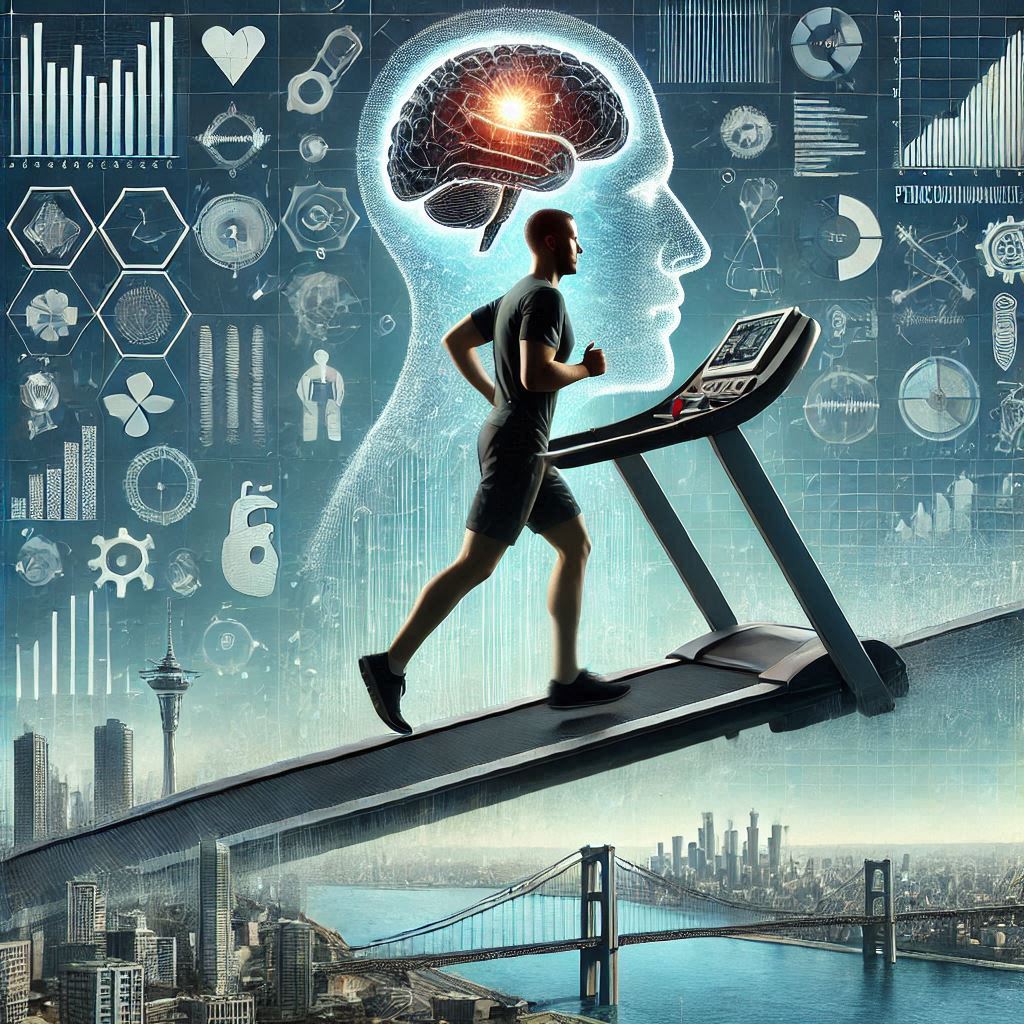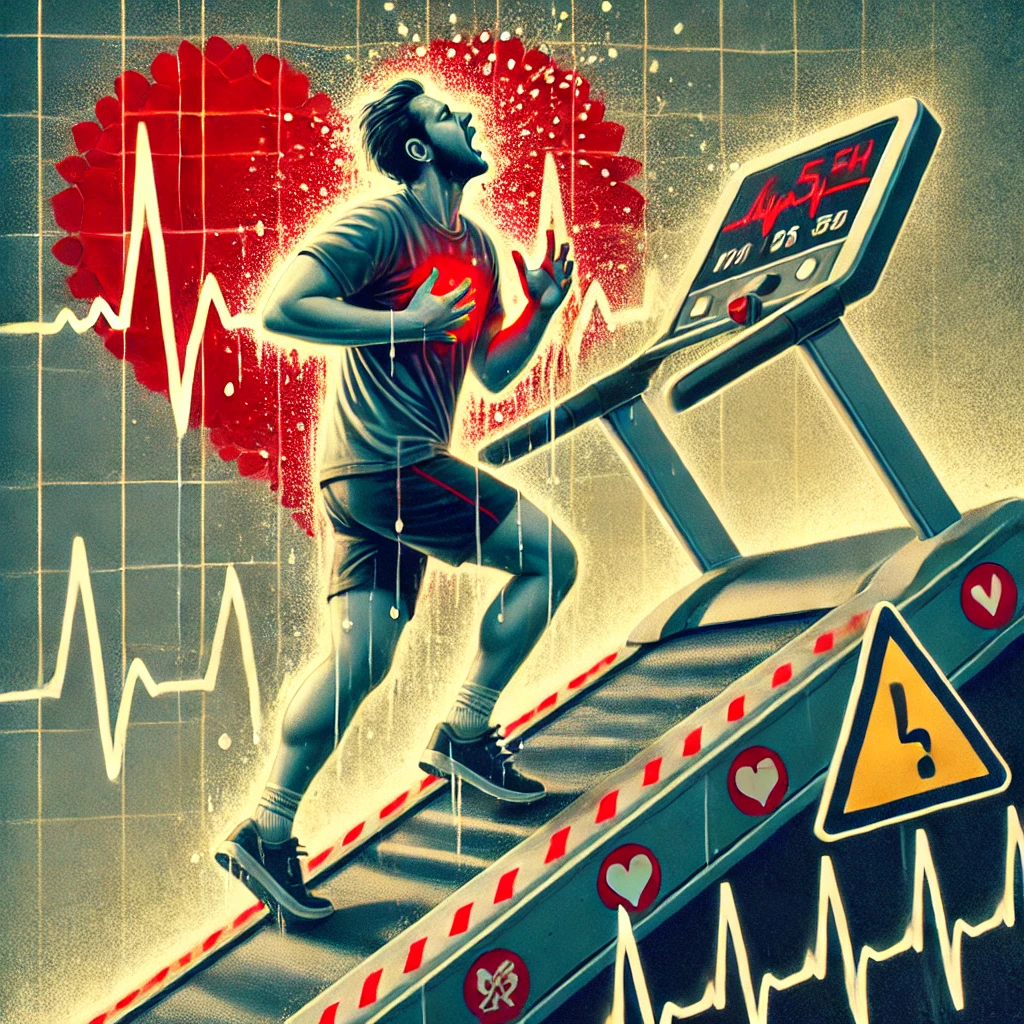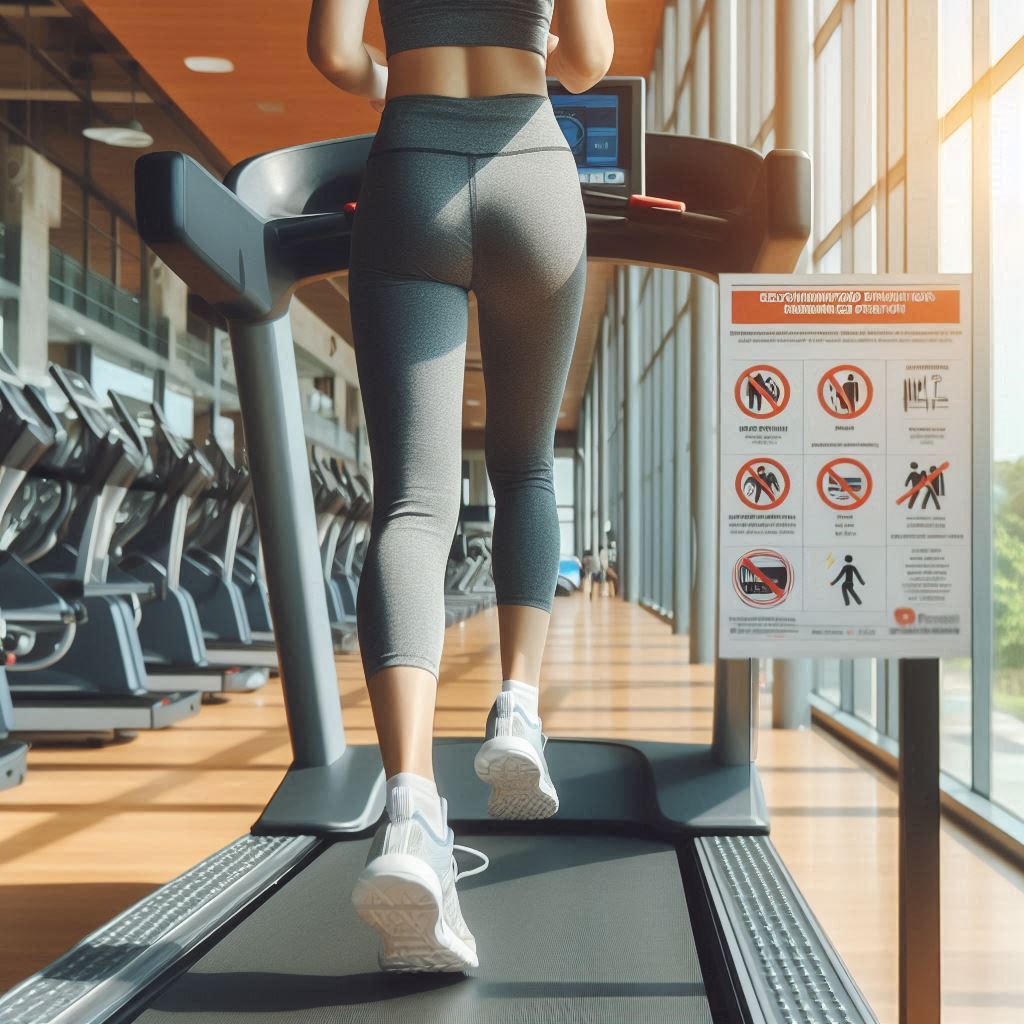Ever found yourself tempted to walk backwards on your treadmill, thinking it’s a magical fitness hack? While reverse walking might seem like an innovative workout trend, it’s not all smooth strides and miraculous benefits. Behind the seemingly harmless practice lurk some serious backward walking challenges that could potentially derail your fitness journey.
As fitness enthusiasts, we’re always hunting for the next groundbreaking exercise technique. But before you turn around and start moonwalking on your treadmill, it’s crucial to understand the potential risks and disadvantages of reverse walking that many fitness gurus conveniently overlook. Your body’s biomechanics aren’t designed for backward locomotion, and what seems like an innovative workout could actually be setting you up for unexpected complications.

1. Balance and Coordination Challenges
When you step onto a treadmill and decide to walk backwards, you’re essentially asking your body to perform a complex cognitive and physical juggling act. Balance isn’t just about staying upright—it’s about maintaining precise muscular control in an environment that screams “this isn’t natural!” Unlike forward walking, where your brain has years of muscle memory to rely on, reverse walking demands heightened cognitive focus and coordination.

The Brain-Body Disconnect
Your brain has spent years perfecting forward locomotion. Suddenly reversing this process creates a neurological challenge that can feel like trying to write with your non-dominant hand—awkward, unpredictable, and potentially risky.
- Your visual perception becomes compromised
- Depth perception takes a significant hit
- Spatial awareness becomes dramatically reduced
- Reaction times slow dramatically
Professional physical therapists often warn that reverse walking can create a domino effect of coordination challenges. Your body’s proprioceptive system—responsible for understanding where you are in space—goes into complete confusion mode.
Backward walking disrupts your natural biomechanical flow, transforming a simple exercise into a potential injury minefield.
Unexpected Strain Points
Unlike forward walking, reverse locomotion places abnormal stress on muscle groups not typically engaged. Your calves, hamstrings, and lower back bear the brunt of this unconventional movement, potentially leading to unexpected muscle fatigue and increased injury risk.
Consider this: Would you ask a car to drive in reverse for extended periods? Probably not. Similarly, your body isn’t designed for prolonged backward movement, especially on a treadmill’s potentially unforgiving surface.
Pro tip: If you're determined to incorporate reverse walking, start slow, maintain close proximity to support rails, and listen closely to your body's signals. Your muscles will thank you later!
2. Increased Risk of Joint and Muscle Strain
When it comes to the disadvantages of reverse walking, joint and muscle strain isn’t just a potential risk—it’s practically a guarantee. Your body’s biomechanical design is fundamentally optimized for forward motion, making backward locomotion a recipe for potential orthopedic complications.

Unnatural Biomechanical Stress
Walking backwards forces your muscles and joints into positions they weren’t evolutionarily designed to handle. The natural shock absorption mechanisms that protect your body during forward walking become dramatically compromised, creating a perfect storm for potential injuries.
- Increased pressure on knee ligaments
- Abnormal hip joint rotation
- Heightened risk of muscle micro-tears
- Unexpected strain on lower back muscles
Imagine trying to write your name backward while blindfolded—that’s essentially what you’re asking your muscles to do when practicing reverse walking. The unnatural movement patterns create significant biomechanical challenges.
Cumulative Damage Potential
While a single session of backward walking might seem harmless, repeated practice can lead to cumulative stress on your musculoskeletal system. Your joints, particularly knees and ankles, bear an asymmetrical load that they’re not accustomed to managing.
The stress isn’t just immediate—it can create long-term compensation patterns that might lead to chronic pain or structural imbalances.
Muscle Recruitment Challenges
Your posterior chain muscles—including hamstrings, glutes, and lower back muscles—work differently during reverse walking. This unconventional muscle recruitment can lead to:
- Uneven muscle development
- Potential muscle fatigue
- Increased risk of compensatory injuries
- Reduced overall movement efficiency
Pro tip: If you're genuinely interested in challenging your body, consider safer alternatives like walking on an incline that provide similar muscular challenges without the extreme biomechanical risks.
3. Potential Neurological Complications
When exploring the disadvantages of reverse walking, the neurological implications are far more profound than most fitness enthusiasts realize. Your brain isn’t just passively controlling movement—it’s actively negotiating a complex neural maze that can lead to unexpected cognitive and sensory challenges.

Cognitive Processing Overload
Backward walking essentially forces your brain into an intense cognitive workout that goes beyond typical exercise demands. Unlike forward locomotion, which is almost automatic, reverse movement requires constant, conscious neural recalibration.
- Increased mental fatigue during movement
- Higher cognitive load for basic navigation
- Reduced automatic motor response capabilities
- Potential short-term spatial disorientation
Reverse walking isn't just a physical challenge—it's a neurological puzzle that can temporarily rewire your brain's movement algorithms.
Sensory Perception Disruption
Your brain relies on a sophisticated network of sensory inputs—visual, vestibular, and proprioceptive—to maintain balance and orientation. Backward walking dramatically disrupts these intricate communication channels, potentially creating temporary but significant perceptual disturbances.
Imagine your brain’s sensory system as a complex GPS. Walking backwards is like suddenly asking that GPS to navigate using an inverse map—confusing, disorienting, and potentially risky.
Potential Long-Term Neural Adaptation Risks
Repeated backward walking might trigger neuroplastic changes that aren’t necessarily beneficial. While some neural adaptation can be positive, consistently challenging your brain’s movement patterns could potentially:
- Create inefficient neural pathways
- Reduce overall movement efficiency
- Increase cognitive processing time
- Potentially impact balance mechanisms
Remember, your brain is an incredibly sophisticated organ—respect its natural processing capabilities and avoid unnecessarily complex movement patterns that could compromise its intricate functioning.
4. Limited Cardiovascular Effectiveness
When it comes to cardiovascular training, reverse walking might seem like an innovative approach, but it’s actually a less effective method compared to traditional forward movement. Your body’s cardiovascular system is fundamentally optimized for forward locomotion, making backward walking a surprisingly inefficient workout strategy.

Reduced Energy Expenditure
Contrary to popular belief, walking backwards doesn’t automatically translate to enhanced calorie burn. In fact, the awkward movement pattern can significantly reduce your overall energy expenditure and cardiovascular engagement. Your muscles work harder to maintain balance, which paradoxically means less efficient cardiovascular conditioning.
- Lower metabolic rate during reverse walking
- Decreased heart rate compared to forward movement
- Reduced oxygen consumption efficiency
- Limited muscle group activation
Compromised Oxygen Utilization
Your body’s cardiovascular system thrives on smooth, rhythmic movements. Backward walking disrupts this natural flow, creating inefficient oxygen transfer and reduced metabolic engagement. It’s like trying to run an engine with intermittent fuel supply—unpredictable and less productive.
Professional fitness trainers often recommend more targeted cardiovascular training methods like incline walking, which provide measurable and consistent cardiovascular benefits.
Limited Cardiovascular Adaptation
Traditional cardiovascular training works by progressively challenging your heart and lungs. Reverse walking creates sporadic and unpredictable cardiovascular stimulus that doesn’t contribute to long-term fitness improvements.
- Inconsistent heart rate elevation
- Reduced cardiovascular endurance development
- Minimal long-term fitness adaptations
- Inefficient energy system engagement
Pro tip: If you're looking to maximize cardiovascular benefits, stick to proven techniques like steady-state cardio, interval training, or strategic pace variations that provide predictable and measurable fitness improvements.
5. Environmental and Safety Concerns
When diving into the disadvantages of reverse walking, environmental and safety concerns emerge as critical factors that many fitness enthusiasts conveniently overlook. Your surroundings play a pivotal role in determining the safety and feasibility of this unconventional movement technique.

Unpredictable Terrain Challenges
Walking backwards isn’t just about your body’s mechanics—it’s about navigating an environment that wasn’t designed for reverse locomotion. Whether you’re on a treadmill or in a public space, unexpected obstacles can transform your workout into a potential hazard zone.
- Increased risk of tripping over unseen objects
- Limited peripheral vision and spatial awareness
- Potential collision risks with equipment or other people
- Compromised ability to detect environmental hazards
Safety isn't just about what you do, but where and how you do it.
Treadmill-Specific Risks
Reverse walking on a treadmill amplifies safety concerns exponentially. The machine’s moving belt creates an additional layer of complexity that can quickly turn a seemingly innovative workout into a potentially dangerous situation.
Consider these critical safety challenges:
- Reduced emergency stop capability
- Increased likelihood of accidental belt slippage
- Compromised balance and stability
- Limited ability to quickly adjust machine settings
Professional trainers consistently warn that treadmills are designed with forward motion in mind. Attempting to reverse your direction goes against the machine’s fundamental engineering, creating unnecessary risk.
Social and Public Space Complications
Beyond personal safety, reverse walking introduces awkward social dynamics and potential interpersonal risks. In gym environments or public spaces, your unconventional movement can:
- Create confusion for nearby exercisers
- Increase chances of accidental collisions
- Potentially violate gym etiquette
- Draw unwanted attention and potential embarrassment
Pro tip: If you're genuinely interested in challenging your fitness routine, consider safer alternatives like incline training that provide similar muscular engagement without compromising environmental safety.
Remember, the most effective workout is one that keeps you safe, comfortable, and injury-free. Backward walking might seem innovative, but the environmental risks far outweigh any potential benefits.
BONUS: Recommended Precautions
If you’re still considering experimenting with reverse walking despite its numerous risks, implementing strategic precautions becomes absolutely crucial. Your safety and long-term physical well-being should always take precedence over trendy fitness experiments.

Essential Safety Protocols
Before attempting any backward locomotion, consider these non-negotiable safety recommendations:
- Always have a stable support mechanism within immediate reach
- Start with extremely slow treadmill speeds (1-2 mph maximum)
- Use handrails consistently during initial attempts
- Wear proper athletic shoes with excellent grip
- Maintain close proximity to emergency stop mechanisms
Professional Guidance is Key
Before diving into reverse walking, consult professionals who can assess your individual physical capabilities. A sports physiotherapist or certified fitness trainer can provide personalized insights about whether this technique is appropriate for your specific fitness level and health condition.
Just because something can be done doesn't mean it should be done without proper preparation and expert guidance.
Physical Preparedness Checklist
Ensure you’re physically prepared by checking these critical factors:
- No pre-existing knee or ankle joint issues
- Strong core and lower body muscle strength
- Excellent balance and proprioceptive awareness
- No recent lower body injuries
- Mental readiness for complex movement patterns
Monitoring and Adaptation
If you decide to proceed, implement a strict monitoring protocol:
- Limit initial reverse walking sessions to 2-3 minutes
- Stop immediately if experiencing any discomfort
- Pay attention to potential muscle or joint strain
- Gradually increase duration only if no adverse reactions occur
Remember, your body is not a experimental playground. Prioritize safety, listen to its signals, and choose workout methods that support sustainable, long-term fitness goals. Reverse walking might sound innovative, but intelligent, informed training always trumps risky exercise trends.